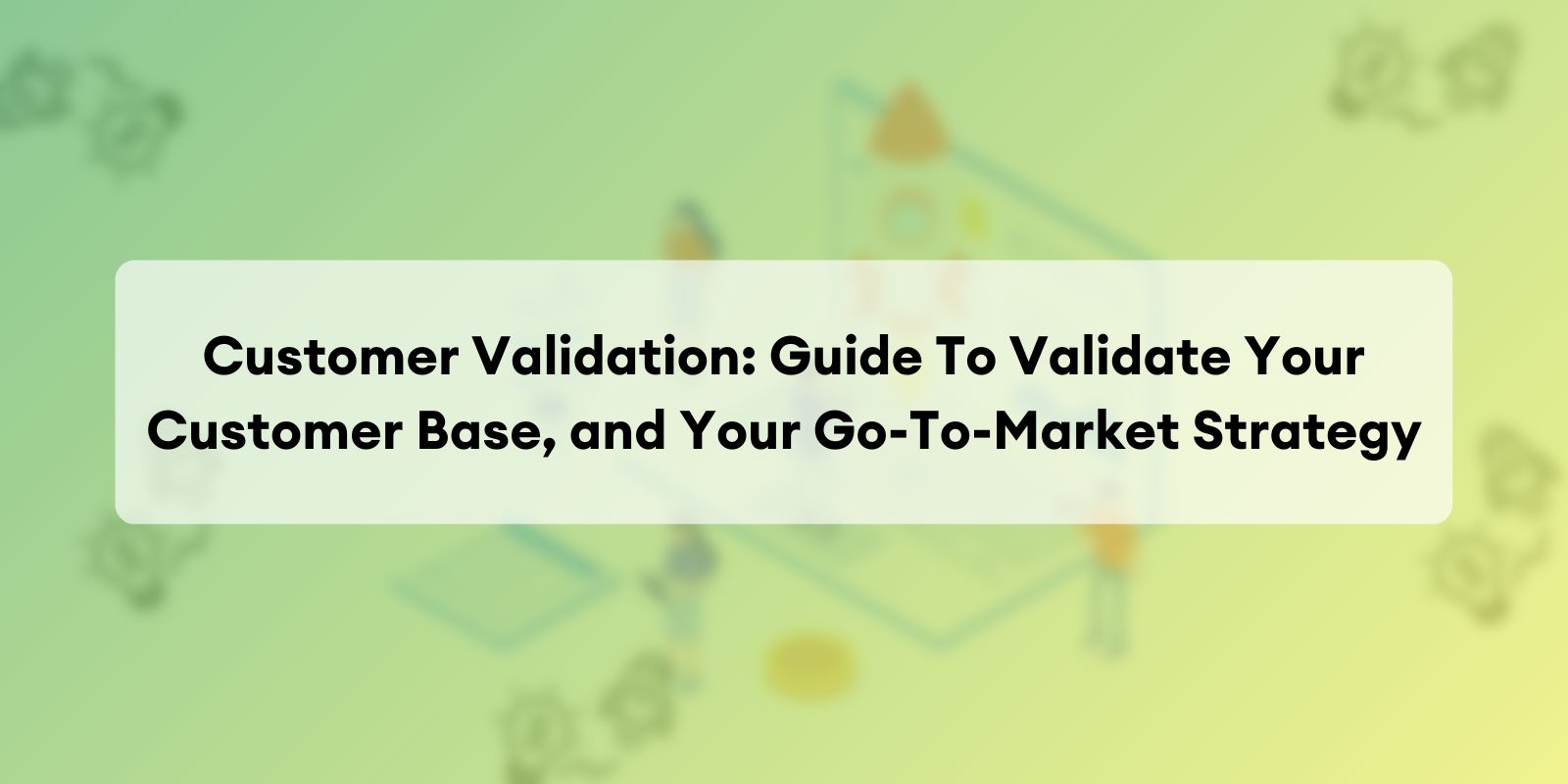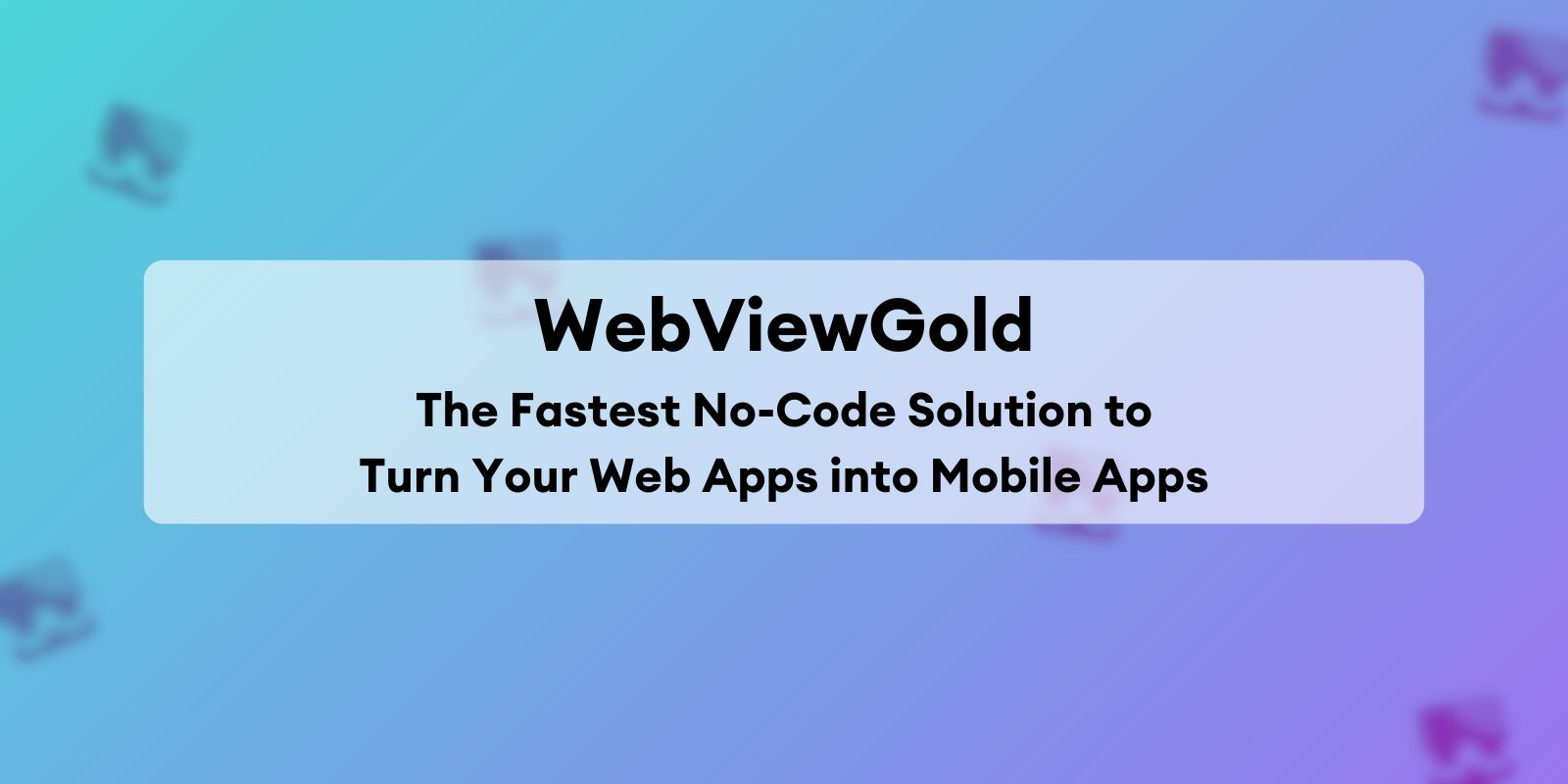
Identifying a sustainable business model can be challenging yet critical for many startups.
As described by Steve Blank,
- Customer Discovery - identifying the economic buyers, and
- Customer Validation - finding a solution to establishing repeatable sales, validates your business model.
And if you are here, we assume you are done with customer discovery, and now you are ready for the next step, which is customer validation.
This article uncovers the following topics:
- What Is Customer Validation
- Importance Of Customer Validation
- What You Need To Focus On During Customer Validation
- When To Conduct Customer Validation
- What To Validate In The Go-To-Market
- Guide For Creating Customer Validation Questionnaire
- Tools And Resources Required For Market Validation
Buckle up cause we are about to go through a maze of customer validation to set a solid foundation for your business model.
What Is Customer Validation?
As described in The Four Steps to the Epiphany, "Customer validation is the second step in your customer development process and business model. It focuses on developing a sales model that can be repeated". Furthermore, Customer validation helps gain insight into your initial assumptions and theories regarding the target market, customer problem, and product. You can use this to iterate your product and find the right market fit after you have conducted all the steps in the idea validation process.
Why Is Customer Validation Important?
Now that we know roughly about customer validation, let's talk about its objective and importance.
- The main objective of customer validation is to establish repeatable sales models and to provide you with evidence that the product is really in need and the customers will use it.
- Validating the sales process, theories, and assumptions will set a solid foundation for your business models.
- Customer validation will help you review your product's flaws and strengths early on in the development process.
- It can help create genuinely unique products that customers will buy and use.
- Reviewing and improving early on will save you a lot of time, resources, and money that would've otherwise been wasted on building a meaningless product.
What Entails Customer Validation?
The following are three areas that need your attention during the customer validation process.
1. Market
If you are looking to sell the product, ensure there's enough market availability. And if your business is niche based, then this will determine if there is a need for your product in your target market, which will lead to some predictions and theories, as well as to our next point.
Also read: Market Validation: All You Need to Know to Validate Your Target Market and Launch with Confidence
2. Problem
In the initial stage of building or manufacturing the product with enough features to attract your targeted customers, you will have some assumptions and theories about the problem you're solving. However, it can get challenging to find customers, let alone find a set of customers with the money they'll part with. This brings us to the next area: finding solutions.
Also read: Problem Validation: 5 Simple Ways To Validate Your Customers' Pain Points Based On Evidence
3. Solution
The clear solution to validate your assumptions and hypotheses is to dive into customer validation, which involves finding a set of customers and a market that will react to your product positively by gauging customer satisfaction based on the data metrics and finding what the customers want.
Also read: Product Validation: Why It Matters, Step-by-Step Action Plan, Free Tools & Resources
When Is the Ideal Timing for Conducting Customer Validation Exercise?
The customer validation should take place in the initial stages of product development, ideally before the product team invests a significant amount of time, resources, and money into building a new product. So before launching your 'final' product, spend time finding out your target customers and ensuring there is market availability; this will underpin your business model.
As described by Steve, "Customer discovery, customer validation, customer creation, and company building are the four steps of the customer development process. And basically, customer discovery- identifying the economic buyers, and customer validation- finding a solution to establishing repeatable sales, validates your business model."
He further explains: "the completion of the first two stages of the customer development process validates your market, identifies customers and economic buyers, as well as analyses the sales cycle and its process, establishes your pricing and channel strategy."
How to Conduct a Customer Validation Exercise?
To exercise the customer validation, we assume you have the right market fit and enough customers but not enough for external investments such as ad campaigns. So let's collect some evidence to know your position in the market with the customer validation.
Customer validation consists of four practical phases that can validate your assumptions regarding your sales and products.
Phase 1: Get Ready to Sell
Phase 01 is wholly about getting everything ready with the help of the insights generated in the customer discovery process. This means developing a minimum viable product solution based on your customers' needs and validating assumptions and hypotheses.
For example, if you have a practical product, then you will acquire or develop practical demos, sales data sheets, price lists, etc. And if it is a web and mobile feature product, then you will develop a high fidelity minimum viable product, which is a fancy term for website and mobile app with core selling features. You can build a landing page with all the features listed.
At this stage, it is also important to know how to price your product rightly. Learn it in our price testing guide.
Phase 2: Get it Out
Steve Blank says, "Unless you have tested the assumptions in your business model first, outside the building, your business plan is just creative writing."
Once done with the previous phase, it's time to get your product out of the building- physically or virtually, and sell. This will corroborate your value proposition and sales roadmap, and the target customers here are what Steve Blank calls "Early evangelists," who will provide you with sufficient validation for your assumptions.
Phase 3: Develop Positioning
This phase is to be done simultaneously with phase 02, which is understanding your customers' feedback on your product. In this phase, you'll develop a position based on the data metrics, that is, comments and constructive criticisms provided by your customers.
You might also be interested in learning about message testing and concept validation.
Phase 4: Verify
The last phase of customer validation is to pivot or proceed. In this phase, you incorporate the data metrics accumulated from the previous three phases and examine the progress made so far.
Make a product decision on whether you are ready to proceed and start scaling sales and iterate the product by spending more on customer creations only if you are sure that this business model is repeatable and scalable. If not, go back from phase 04 and repeat, and heed to your customer segments or features or their needs.
Validate Go-To-Market
Knowing what to validate is simply as significant as knowing the importance of customer validation. The primary thing to validate is your target market, which is to be done in the conception stage. This is to determine your total market potential, as well as to address your market segment's needs and earn your first paying customers. Here's what to validate in the go-to-market.
- You have established relationships with at least one person- influencer, initiator, or buyer, on each tier of your marketing ecosystem, to keep the Word Of Mouth about your product moving up to the other layers of the ecosystem.
- You have identified a potential go-to-market channel to reach your target set of customers.
- Your target customers are within your range of reach. For example, sometimes customers are separated by the language barrier, and you have found a solution to overcome that barrier.
- You have established early connections that can drive mass sales in a short-term period as an acquisition channel.
- Even if they aren't able to provide access to a mass sales channel, you have one or more people that are initiators, buyers, or influencers, connected to you.
- You have acquired an agreement with your consultants to mediate or promote your product for their audience.
- You have influenced people to talk or share about your product without initiating it or outreaching them.
A Quick Guide for Designing Your Customer Validation Questionnaire
Your best bet when creating a questionnaire for customer validation feedback is to be clear and direct. Moreover, try to add questions that can give you the insight to improve your sales. Following are some questions you can consider asking.
- What is the most useful feature of the product: This question can provide an understanding of what the strongest feature is attracting the customer and your product's unique value proposition.
- What is the least useful feature of the product: It's not bad to have a feature-packed product. However, not every feature you offer will prove to be useful. But that does not entail it needs to be cropped off. Instead, you just need to look for an optimized version of the feature to be useful.
- What do you think is missing from the product: Similar to the previous question, this will help you understand what things to add, pivot and update.
- Is there anything amiss in the offer: This question can help highlight anything unclear or amiss from your sales copy. And again, between creativity and clarity, clarity can yield more positive results than creativity in the sales copy.
- How likely are you to purchase the product on a scale of 1-10: This question will provide data on the customers' willingness to purchase your product. However, not everyone answering with 5 or even 10 will buy your product. So how will you know which customer will adopt better? Simply filter the answers of non-customers and compare them with potential customers.
- How much are you willing to pay for this product: Even though it is difficult to figure out your customers' willingness to pay (WTP), this question can somewhat gauge an approximate perception of the pricing.
- Any other feedback you'd like to add: An open-ended question like this can provide you with critical feedback from your potential customers and offers a chance for the customers to round up their thoughts regarding the product.
In Conclusion
Customer validation is finding or establishing a process for identifying, communicating, and acquiring customers who will be satisfied with your product and repeatedly use it. It will also help solidify the foundation for your business models and help review the product's flaws and strengths early on in the development process, efficiently avoiding the time and resource wastage.
Furthermore, focus on all the areas requiring attention during the customer validation. And remember, customer validation should take place in the initial stages of product development, ideally before you invest too much time and resources in a prototype. So, get out and collect critical feedback and make the right to pivot or proceed.
Hope this article was informative enough on customer validation for you, but if you need more information, here are resources for further reading:
- Customer Development Model: Understanding Customer Validation
- 10 Steps to Validate Startup Ideas Without Building Anything
- Why Startups Fail
- What is Customer Discovery, and Why Should You Care About it?
Written by Aastha Kochar, a freelance writer at Shnoco.




